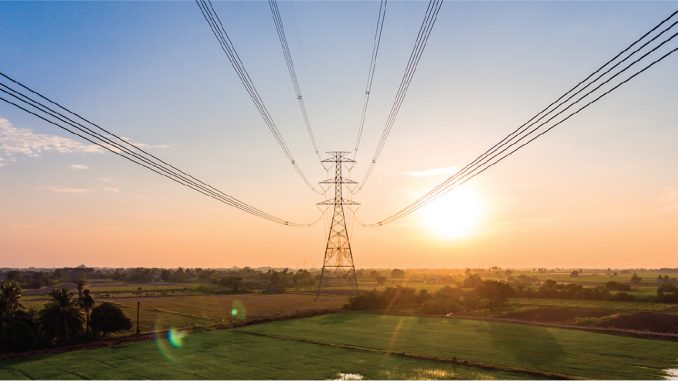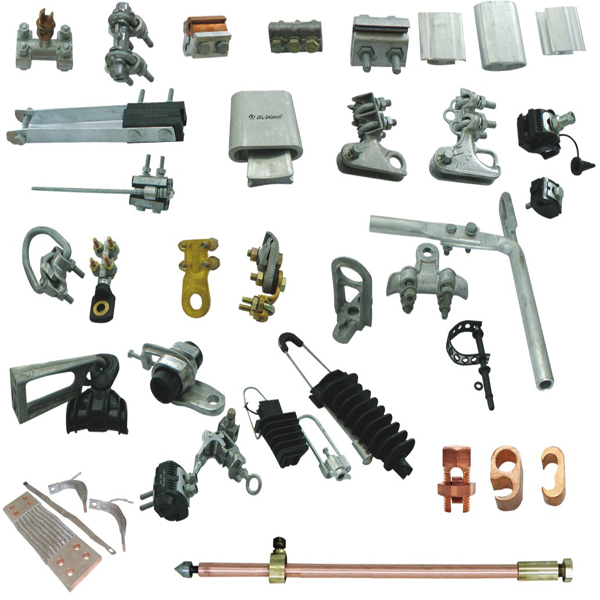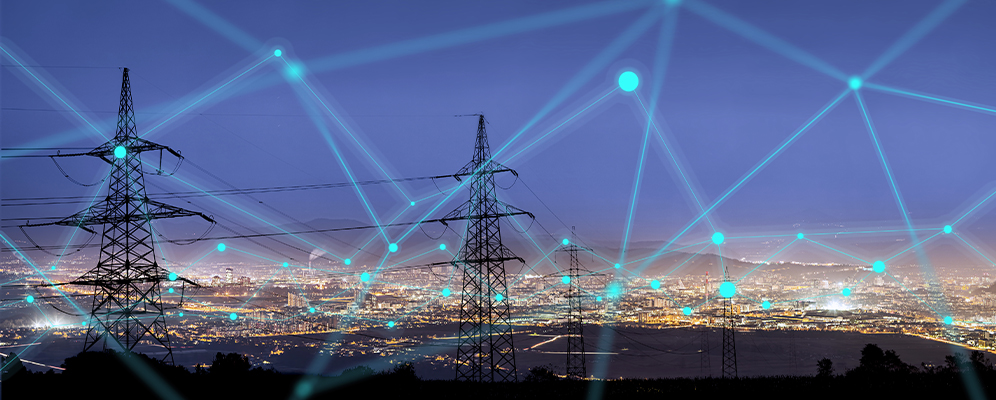- Energy infrastructure in South America requires upgrading and modernizing to ensure energy reliability and efficiency. Power line hardware helps in modernizing these transmision lines to enhance grid efficiency.
- Transmission technologies aid in renewable energy integration, cross-border energy trade and improve energy reliability.
To meet the growing energy demand, South America is striving to upgrade its energy infrastructure. One of the many ways is through transmission technologies that address the demand for reliable energy. The diverse geography in South American countries requires robust transmission infrastructure. This is to integrate renewable energy sources into the main electrical grid. Such sources include hydroelectric dams, wind farms, and solar installations. With investments in these technologies, South America is set to enhance energy access, efficiency, and sustainability. They could also address the geographical and regulatory challenges to unlock their potential. Moreover, power line hardware ensures the efficient, reliable, and safe transfer of electricity. Therefore, what are the various technologies, and how does power line hardware impact their development?
Power line hardware serves as a backbone of the transmission infrastructure in South america. The components ensures efficient transmission of electricity. The continuous development of energy grids needs advanced and resilient transmission lines. Power line hardware is critical in integrating renewable energy. Components like conductors, insulators, towers, transformers, clamps, and connectors serve in the renewable energy integration into the electrical grid. Additionally, high-quality power line hardware is able to withstand diverse geographical and environmental challenges in South America.
Key drivers for transmission technology growth in South America
There are several factors that drive the growth of transmission technologies in South America. These drivers reflect the need to meet rising energy demand, integrate renewable energy sources, and improve grid efficiency. The increased deployment of these technologies contributes to the region’s transition to a cleaner and interconnected energy future. South American governments and the private sector could help shape the energy landscape through investments, policies, and incentives. Power line hardware supports conductors and ensures transmission lines are held high above the ground. The following are the major drivers of transmission technology growth in South America.

- Increasing electricity demand – the growth of industrialization, urbanization, and economic growth has led to increased energy consumption. For instance, countries like Chile, Argentina, and Brazil have increased pressure on national grids to deliver more reliable electricity over longer distances. The expansion of the grid through transmission technologies helps to ensure uninterrupted power supply.
- Renewable energy expansion – most South American countries are making strides in investments in solar, wind, and hydropower projects. Power line hardware helps to integrate this power to deliver to local consumers. For instance, Brazil, Paraguay, and Uruguay rely on hydroelectric dams that use HVDC to transport this energy across long distances with minimal loss.
- Regional integration – cross-border energy trade helps to optimize resources and improve grid reliability. Countries like Brazil, Argentina, and Paraguay are working together to share surplus energy.
- Decarbonization and climate goals – South American countries have goals to reduce carbon emissions. The goals also include the transition to cleaner energy. For example, Chile aims for 70% of its electricity to come from renewable sources by 2030. Achieving these climate goals requires modernization and expansion to accommodate renewable energy sources.
Role of high-voltage direct current in South America’s energy infrastructure
High-voltage direct current (HVDC) technology plays a vital role in South America’s energy infrastructure. HVDC helps to deliver power over distances between generation sources and consumption centers. They also enable efficient grid stability, facilitate cross-border interconnections, and support decarbonization goals. The continuous development of energy infrastructure and renewable energy increases the energy targets. Power line hardware aids in the development of the energy infrastructure in South America. They also help to withstand diverse geographical and environmental challenges. This is to maintain a stable, reliable, and efficient grid system. The following is the importance of high voltage direct current in South America’s energy infrastructure.

- Integration of renewable energy – HVDC systems are vital in integrating renewable energy into the grid. They are able to handle fluctuating power outputs and connect diverse energy sources. For instance, in Chile and Argentina, HVDC technology helps integrate wind power from remote wind farms in Patagonia into the main grid. Also, HVDC connects large-scale solar projects to the central grid. This helps to address the challenge of transmitting high amounts of solar energy.
- Reducing transmission losses – HVDC technology reduces energy losses compared to Alternating Current (AC) systems. In Brazil, HVDC lines help reduce losses over a vast transmission network. This helps ensure efficient delivery of electricity from hydroelectric plants to urban centers.
- Enhancing grid stability and reliability – the HVDC systems improve grid reliability by providing fast and precise control of power flows. HVDC systems can act as stabilizers in case of grid disturbances to provide emergency power support.
- Flexibility and upgradeability – HVDC systems provide flexibility to allow for easy upgrading as compared to AC systems. They have a modular design that allows easy expansion to allow for the gradual integration of renewable projects.
Various functions of power line hardware in transmission technologies
Power line hardware plays a role in the transmission technologies, serving as the backbone of the infrastructure. It ensures the efficient and reliable transport of electricity across diverse landscapes. Power line hardware is also crucial in ensuring the transmission system operates under various environmental conditions. It is essential, especially with the growing emphasis on renewable energy and cross-border energy trade. The following are the functions of various power line hardware in transmission technologies.

- Conductors – these carry electricity from power plants to the end users. The commonly used conductors are the aluminum conductor steel reinforced (ACSR). This conductor has the strength and ability to transmit large amounts of electricity over long distances.
- Insulators – these ensure the conductors have support on transmission towers without electricity loss. Ceramic or porcelain insulators serve in areas with high humidity, such as the Amazon Basin. They are durable and resistant to moisture and high temperatures.
- Transmission towers – these help support the conductors and elevate them above the ground. By doing so, they ensure safe and reliable transmission over long distances.
- Transformers and switchgear – these components regulate voltage levels and ensure smooth transitions between different sections of the grid. Setting up transformers at generation sites helps in renewable energy integration.
- Spacers and dampers – these help prevent conductor lines from clashing or vibrating to reduce wear and tear. Dampers reduce wind-induced vibrations in power lines in areas with high winds like Patagonia in Chile and Argentina. Spacers maintain the proper separation of bundled conductors in areas with challenging geography.
- Surge arrestors and grounding systems – surge arrestors protect the transmission systems from damage caused by lightning or electrical surges. Grounding systems, including wires and rods, dissipate the excess electrical currents into the ground.
Underground and submarine cables using power line hardware
Underground and submarine cables offer a solution to the region’s geographical and environmental challenges. The cables are important in modernizing the energy infrastructure, renewable energy integration, and cross-border energy trade. Underground and submarine cables are less exposed to the elements than overhead lines. This helps reduce the risk of damage from extreme weather or natural disasters. This contributes to greater grid reliability and fewer outages. This is especially in areas prone to storms, earthquakes, and other hazards. Also, power line hardware serves critical functions in underground and submarine cables. They ensure the efficient, safe, and reliable transmission of electricity over long distances. Here are some of the roles of the cables in South America’s energy sector.

- Underground cables – these serve in transmission systems where overhead power lines are impractical. In South America, they are relevant for dense urban areas, environmentally sensitive regions, and areas prone to extreme weather conditions. The cables are less vulnerable to damage from weather conditions. This helps enhance grid reliability and reduce the risk of power outages.
- Submarine cables – these help to send electricity across bodies of water to ease cross-border energy trade. For instance, the Brazil-Uruguay submarine interconnection enables the exchange of electricity between the countries. This improves energy security, allows countries to share surplus renewable energy, and enhances the stability of national grids.
In essence,
Power line hardware plays a critical role in South America’s energy infrastructure. It supports the efficient and reliable transportation of electricity across diverse landscapes in. The continuous development of renewable energy sources and cross-border energy trade will cause the need for power line hardware. It is thus advisable for governments to create opportunities for investment in these areas. This will help to promote the growth of clean energy production. The investments will also cause the adoption of technologies such as high voltage direct current (HVDC) systems, underground and submarine cables. HVDC systems enable the efficient long-distance transmission and the integration of renewable energy sources. These technologies help to reduce transmission losses and ease cross-border energy trade. This will lead to a clean, and energy sustainable future.

At TTF Power Systems, we are a one-stop-shop for utility pole hardware fittings, transmission line accessories, and power line construction equipment. We also provide our customers with the most extensive range of products in the industry, excellent value, and knowledgeable service. Additionally, our services result in optimal product quality, strict adherence to custom design, and reduced overall cost. We are constantly checking manufacturing processes, addressing material concerns, and improving staff expertise to ensure the best quality product. Reach out to us for all power line hardware needs to ensure the continued development of transmission technologies in the energy sector.

